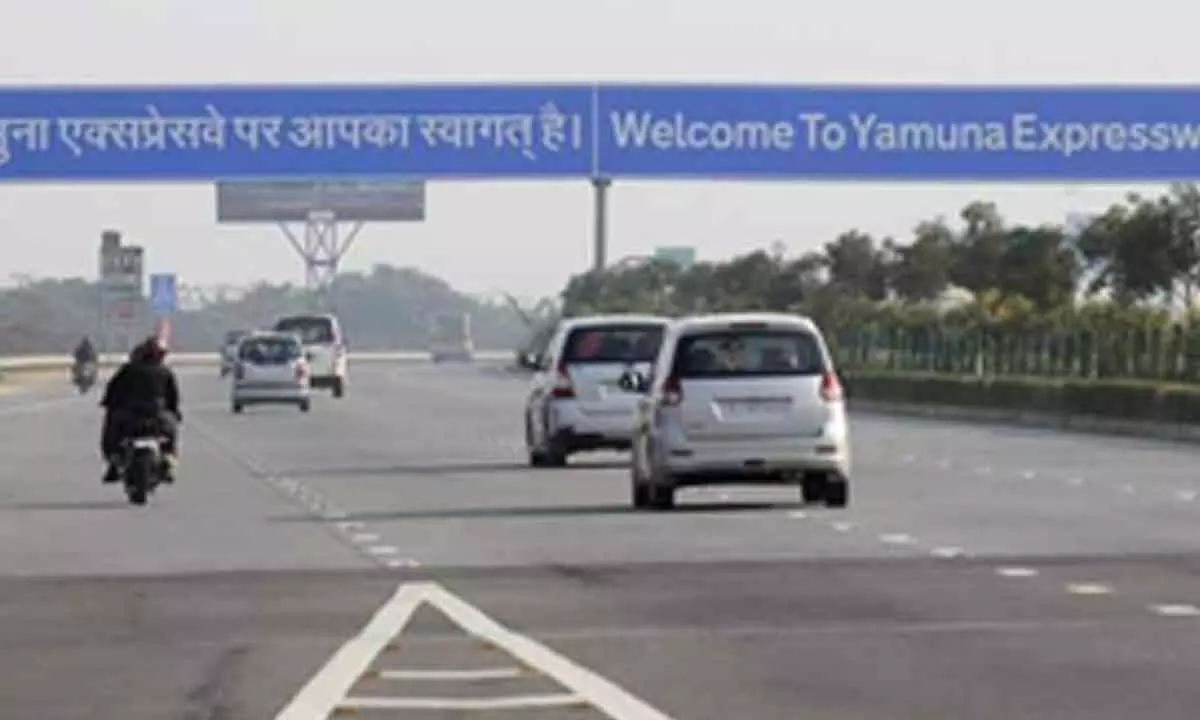As Yogi acts on Yamuna Expressway, IIT-D study analyses high accident rate
Share :

The journey from Noida to Agra through the Yamuna Expressway can now be completed in significantly less time as the traffic has been shifted from the old Mathura Road to this expressway.
The journey from Noida to Agra through the Yamuna Expressway can now be completed in significantly less time as the traffic has been shifted from the old Mathura Road to this expressway.
As the traffic on the expressway has surged, so have the number of accidents. In order to curb these rising incidents, the IIT Delhi conducted a survey of the Yamuna Expressway and presented the identified shortcomings to the Yamuna Expressway Authority.
After IIT Delhi identified shortcomings were gradually addressed, a visible reduction in the road accidents were observed with each year.
Starting from December 15 to February 15, speed limits on the Yamuna Expressway have been enforced, reducing the speed limit from 100 km, per hour to 75 km per hour.
In a meeting with the Uttar Pradesh State Road Safety Council on December 2, Chief Minister Yogi Adityanath took several decisions to enhance safety on the Yamuna Expressway. The concerned departments are now tasked with promptly implementing these decisions.
During this meeting, numerous directives were issued to address and prevent accidents on the Yamuna Expressway. These include doubling the number of patrolling vehicles, cranes, and ambulances on the expressway.
Additionally, 64 new rooms will be set up for surveillance purposes, along with the installation of signage boards, thermoplastic paint, and reflective lights on both sides of the road.
As per the Chief Minister's instructions, all pending work, including road signage, thermoplastic paint, and reflective lights on both sides of the road, will be completed expeditiously. Currently, there are six patrolling vehicles on the Yamuna Expressway.
Directions have also been given to double the number of patrolling vehicles on the Yamuna Expressway.
The number of commercial vehicle cranes on the expressway will also be doubled, considering the current count of eight.
Moreover, instructions have been issued to increase the number of CCTV cameras on the Yamuna Expressway to enhance surveillance. Currently, there are 42 cameras in operation, and 64 cameras are set to be installed, as per the directives.
The survey conducted by IIT Delhi identified several shortcomings during the process.
Out of these, seven major points were presented to the Yamuna Authority, indicating that if these issues are addressed promptly, the number of accidents on this road can decrease. These steps were:
1. Rumble strips should be installed near entry and exit gates of the expressway to slow down vehicle speed
2. Crash attenuators should be installed at exit gates. Vehicles exiting the expressway often maintain high speeds; therefore, crash attenuators will prevent the vehicle from going out of control in case of an emergency.
3. Increase the number of signboards on the expressway, highlighting the location of toll plazas and other facilities.
4. Raise the barriers along the expressway to prevent the entry of animals.
5. Eliminate lanes on the expressway; currently, there are designated lanes for bikes and overtaking cars.
6. Improve the existing challan (fine) system for controlling vehicle speed; the current system is not very effective.
7. Replace dividers with median barriers to enhance safety.
Traffic and transportation expert Abhinav Singh Chauhan said that cement roads have a longer life and require less maintenance, which is why many places are now opting for them. Pavement of cemented roads does not absorb heat and reflects it, causing the tires of vehicles to heat up quickly.
Chauhan explained that concrete or cemented roads have a pavement life of about 20,000 kilometers for general tires, whereas asphalt roads can endure up to 40,000 kilometers.
He highlighted the importance of monitoring the alertness of drivers on the road, suggesting the installation of signboards at various intervals to keep drivers informed about upcoming conditions.
Restrooms and tea points should also be strategically located along the route to ensure drivers remain fresh.
Road safety expert Abhinav said that tire companies manufacture different types of tires, and the flexibility of the tire corresponds to the luxury of the vehicle. It's crucial to consider the type of tire, as excessively worn or damaged tires pose a significant risk, especially on cemented expressways.
In conclusion, a significant decision has been taken to prevent accidents caused by fog and mist on the Yamuna Expressway.
From December 15, vehicles traveling on the Yamuna Expressway will have their speed restricted, reducing the speed from 100 km per hour to 75 km per hour. This directive will be in effect from December 15 to February 15.
In addition, reflective tape, signs/reflections, and fog lights will be installed at all toll plaza booths on the Yamuna Expressway.
Arun Veer Singh, the CEO of Yamuna Authority, said that during foggy conditions, the likelihood of accidents increases on the Yamuna Expressway.
To ensure safe travel for drivers during foggy conditions on the Yamuna Expressway, pamphlets related to safety measures will be distributed at entry/exit points, toll plazas, and road-side facilities. Announcements will also be made at all toll plazas through the PA system.
To disseminate information about safety measures during fog, large display boards will be placed at entry/exit points, toll plazas, and road-side facilities through the Yamuna Expressway. Saturdays, Sundays, and holidays witness increased traffic on the Yamuna Expressway.
During this period, effective arrangements will be made to ensure smooth toll tax payments at toll plaza booths on the Yamuna Expressway.
It was highlighted that the reflective tape on the expressway often lacks sufficient signs/reflections, leading to poor visibility, which could result in accidents.
Therefore, immediate action will be taken to install reflective tape on the Yamuna Expressway. Additionally, fog lights will be installed at entry/exit points on the expressway.
















